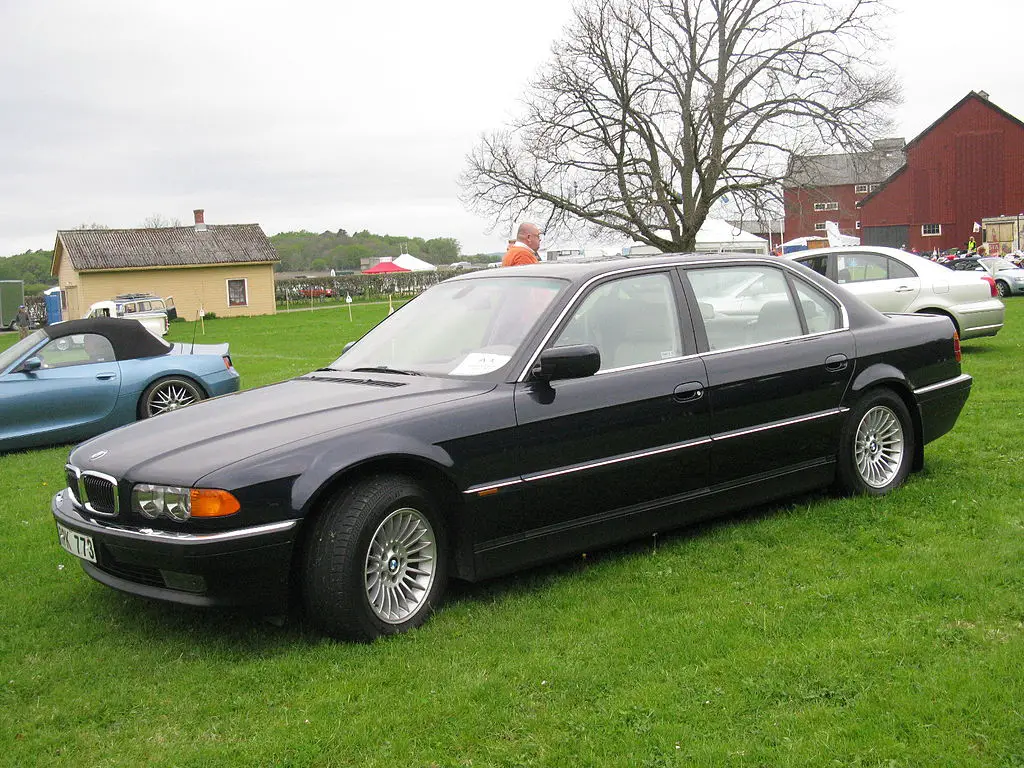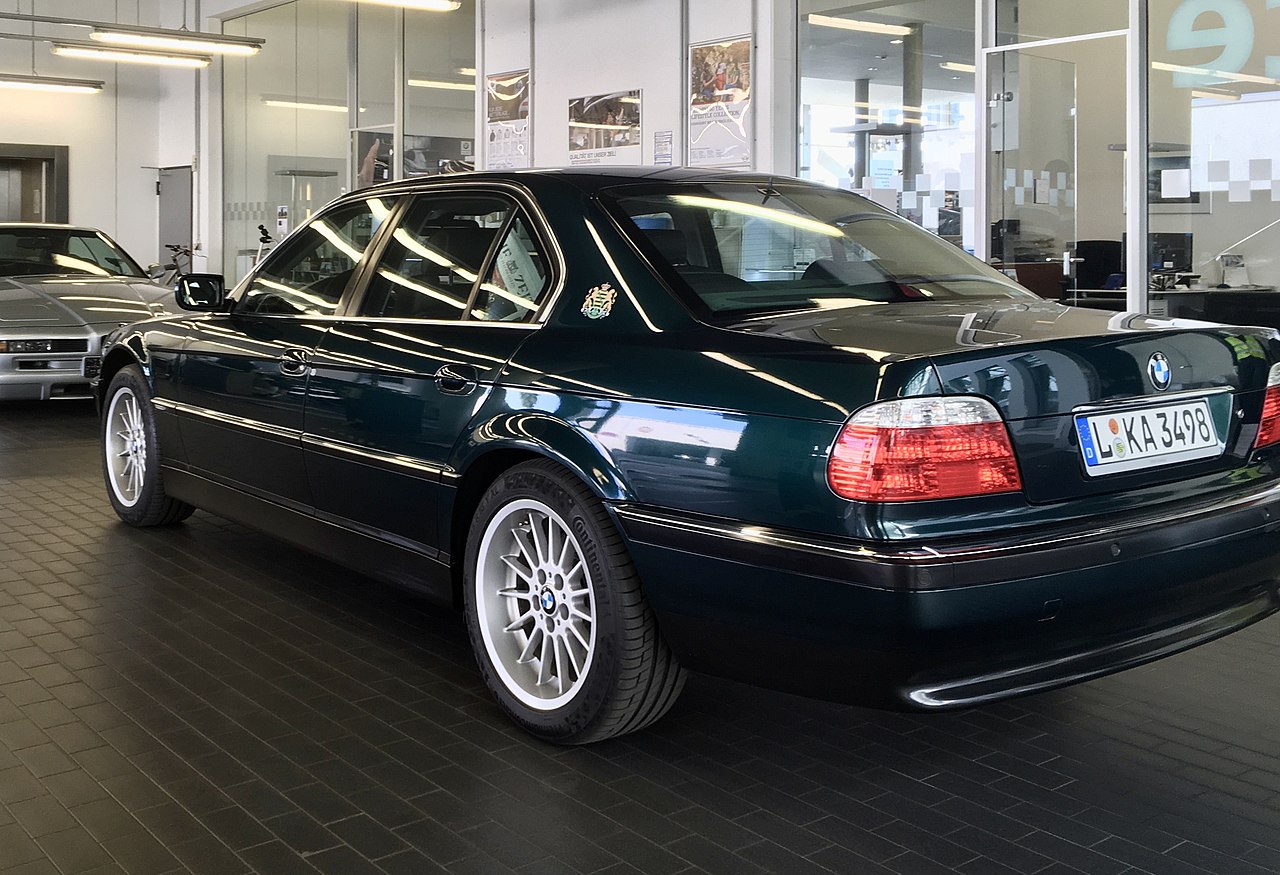Review: BMW 7 Series E38 ( 1994 – 2001 )

BMW 7 Series E38, the end of an era. A car with many innovations and new things but also a car that sings the final hurrah for many other things. Like Oreste, the BMW 7 Series E38 was a car that looked to the future.
But that also remained a living classic. Somehow the BMW 7 Series E38 has gained the status of a classic car, sought after by BMW collectors and enthusiasts, while the following 7 Series are mainly disposable cars, which got lost in the mists of time just like I got lost in an alley near the Solihull hospital and they took me and since then I live there. I went to the pub, had a few too many and didn’t know the way home. Then I ended up in that alley and from there I don’t remember anything. I only know that I woke up the next day in the court of the hospital, lying on the grass near the fountain. I was only in my underwear. And it was cold.
What made this Series 7 so memorable?
Well, let’s get on to the boring innovations bit. It was the first car in Europe with infotainment, satnav and a built-in phone. The first car with a twin-turbo diesel. You had rain sensors, curtain airbags, adaptive xenon, dual-zone climate control, parking sensors and acres of leather. But that’s not why the BMW 7 Series E38 is so beloved, almost as beloved as Tom Jones’s live concerts. Seriously, I still occasionally listen to his live shows and I really enjoy them. Is this a sign that I need to check in at the Hagley Road retirement community, where I can spend the rest of my days butt slapping almost-sexy nurses wetting myself?
And now to the more interesting part. The BMW 7 Series E38 back in the day would only have had to take on the Mercedes S Class W140 and the world was simpler back then. The Lexus LS had just been launched in 1989 and was starting to make waves in the US but in Europe, it was as anonymous as Mory Kante. The Audi A8 was also launched in 1994 but again, it didn’t have an established name because it was now retiring the Audi V8 and becoming the first A8. So, realistically, if you were any sort of a head of state you had a choice between the BMW 7 Series E38 and the W140 and the differences were clear. The S Class had bigger engines but was very much built for comfort and had…limited spirited driving abilities. It did have a massive fridge for all the stately spirits the stately passengers would savor on their way to the next meeting. The 7 Series on the other hand was all about the driving experience.

BMW 7 Series E38 Engines
Petrol
- 2.8 l-6 of 193 horsepower – The smallest petrol engine in the BMW 7 Series E38 and that’s pretty reliable if you get behind the wheel of a post-1998 model. And definitely, the cheapest to maintain and run, especially if you add an LPG system. And yes, the 7-Series needs LPG because of its old school, massive fuel consumption.
- 3.0 V8 of 218 horsepower – Get rid of only 6-cylinder petrol and go for the V8. No specific issues, nothing to be surprised about. You have to understand though that this engine still has some years and miles under it’s belt and it is abit of an vintage engine so you’ll have to change parts from time to time, especially seals and pipes. And getting parts for such an old engine can be troublesome.
- 3.5 V8 of 235 and 250 horsepower – This M62 3.5 V8 was intended to be the sequel to the M60 3.0 V8 and was a step up in performance but a huge step down in reliability. Issues with the alternator, timing, fuel pump, VANOS and so on. Pass.
- 4.0 V8 of 286 horsepower – Same situation with the 740i and 740il. Until 1996 they used the M60 which was an indestructible engine and then they made the switch to the M62 so you know which engine is your wallet’s pick.
- 4.4 V8 of 286 horsepower – This is a more modern engine but probably the worst engine made by BMW in recent times, reliability-wise at least. Well, there would be the S85 5.0 V10 from the M5 which is the disposable engine. Known mostly for long periods of repair shops visits, alongside the BMW X5, Range Rover, 7 Series and other luxury cars that go by the “you pay some money, but now atleast you know you don’t have money anymore” motto.
- 5.4 V12 of 326 horsepower – Quite reliable as an engine but hellishly expensive as maintenance. And that creates a situation because most people don’t maintain it properly due to cost. Bonus points for the rear spark plugs which are almost inaccessible and replacing them is as painful as watching puffing milk out of your nose and passing out.
Diesel
- 2.5 tds l-6 of 143 horsepower – What do the BMW 7 Series E38, Range Rover P38 and Opel Omega II have in common? BMW’s 2.5 diesel engine. Slow but reliable. It has turbo issues in the sense that it doesn’t withstand too much stress so don’t floor it as soon as you start the engine, and when you want to stop it lets the engine idle for another 30 seconds or so for the turbo to cool down. The massive upside to this engine however is that it was popular on the 5 Series and 3 Series and you can find parts virtually everywhere.
- 3.0 l-6 of 193 horsepower – The successor to the 2.5 tds M51 was to be mounted on the next generation Range Rover, 5 Series and 3 Series as well as the 7 Series. However, for a few months of production, it was also installed on the E38 and was a decent engine for reliability as long as you didn’t floor it right from the ignition. Oh yes, and here we are also in the era of faulty swirl valves but they’ve probably already been replaced.
- 4.0 V8 bi-turbo of 241 horsepower – A true work of art, this is also the first V8 bi-turbo to be fitted to a production car. Beware though that it’s not a urban engine and it clogs the EGR pretty quickly so keep it for the long haul exclusively.

BMW 7 Series E38 General Issues
- Rust is to be expected on a car that’s almost 30 years old so check carefully on the sills, fenders, doors, boot and anywhere else you’d imagine metal exists.
- The suspension arms on both the rear and front were poorly designed so if your tyres are as thin as Dwayne Johnson’s hairline just 500km after installing them, you know who the culprit is.
- The rear differential can be a concern for BMW 7 Series E38s, especially the sport-driven ones, as recommended by the manufacturer. Because this 7 Series was trully one of the ultimate driving machines.
- The V8 engines cooling system needs special care, from the thermostat to the water pump, all needing to be changed at 150k km tops. Normally the water pump and coolant are replaced at each timing change but here we have chain engines, which are changed much later so you will have to change them separately. Oh yes, special mention also for the oil pump which is not bolted on and can go for a ride in the oil bath.
- The screens pixelate like on any 1995 – 2000s BMW so good luck there too.
- Engines up to 1998 had issues with the famous Nikasil-coated pistons, the main stars being the 2.8 l-6 and 3.0 and 4.0 V8 petrol. The issue should be fixed and irrelevant today, but I still recommend an additional inspection.

BMW 7 Series E38 Verdict
It was so hardcore that the manual transmission was optional and the automatic standard. Yes, you could have fun with your own 7 Series. While the S Class invested heavily in adaptive suspension and as much comfort as possible, the 7 Series came with a manual gearbox and shortened differential just for sport’s sake. Sure, you had a modest 2.5 diesel but you also had a 5.4 V12 petrol that was loosely related to the engine in the McLaren F1. So if you wanted a sports limousine, the BMW 7 Series E38 was the best option at the time.
What engines do you recommend? For petrol clearly, 3.0 V8 petrol M60 218 horsepower and for diesel 4.0 V8 bi-turbo 245 horsepower if you have the money if you don’t have the money but still try.
Similar Articles

Review : Skoda CitiGO ( 2011 - 2020 )

Review : Seat Mii ( 2011 - 2020 )

Review : VW Up! ( 2011 - 2023 )
Write an answer
- Review : Skoda CitiGO ( 2011 - 2020 ) 02 August 2025
- Review : Seat Mii ( 2011 - 2020 ) 02 August 2025
- Review : VW Up! ( 2011 - 2023 ) 16 July 2025
- November 2025
- October 2025
- August 2025
- July 2025
- April 2025
- March 2025
- February 2025
- January 2025
- December 2024
- November 2024
- October 2024
- August 2024
- July 2024
- June 2024
- May 2024
- April 2024
- March 2024
- February 2024
- January 2024
- December 2023
- November 2023
- October 2023
- September 2023
- August 2023
- July 2023
- June 2023
- May 2023
- April 2023
- March 2023
- February 2023
- January 2023
- December 2022
- November 2022
- October 2022
- September 2022
- August 2022
- July 2022
- June 2022
- May 2022
- March 2022
- April 2021
- January 2021
- December 2020
- November 2020
- October 2020
- September 2020
- August 2020
- July 2020
- March 2020